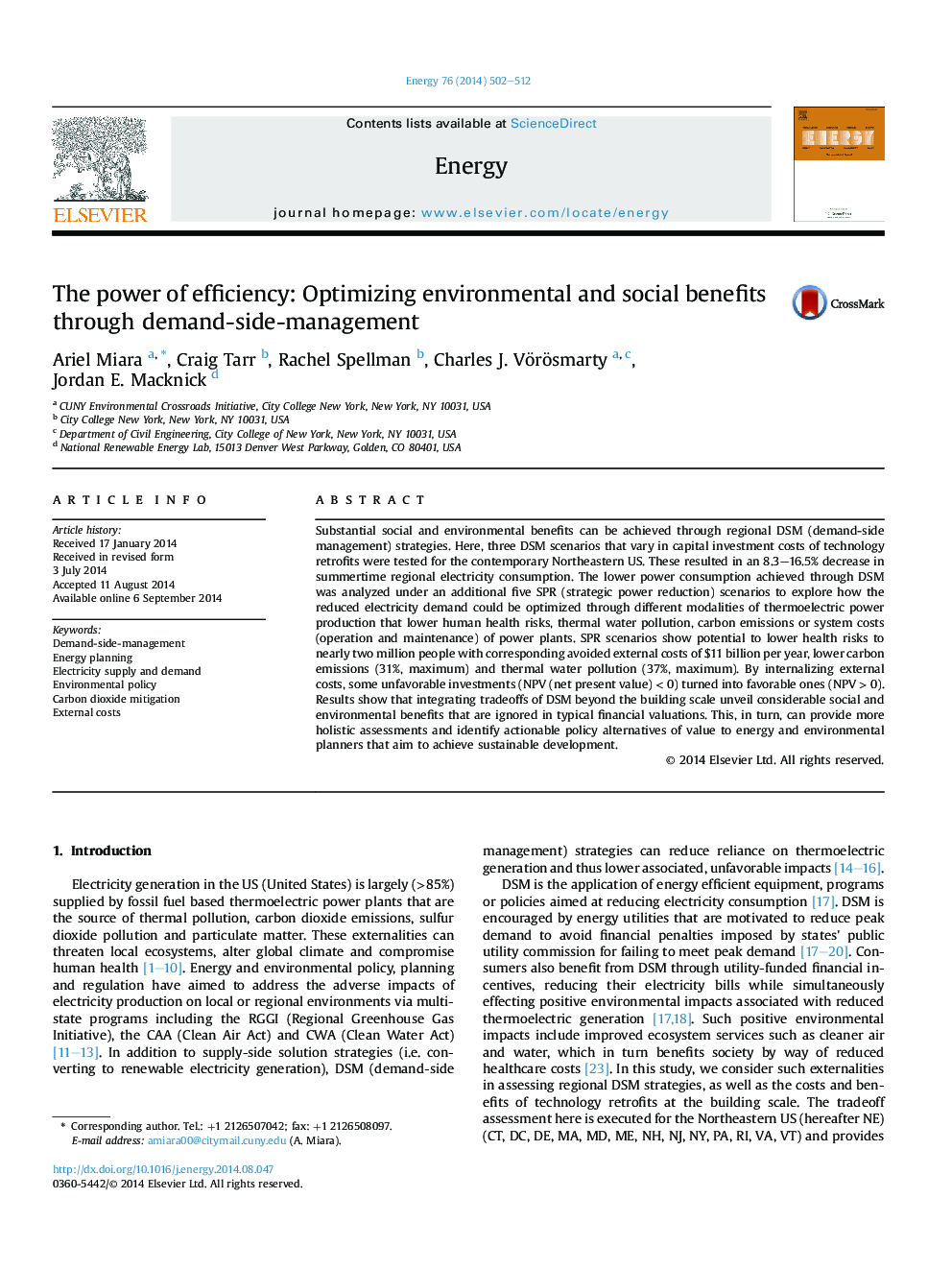| Article ID | Journal | Published Year | Pages | File Type |
|---|---|---|---|---|
| 8076837 | Energy | 2014 | 11 Pages |
Abstract
Substantial social and environmental benefits can be achieved through regional DSM (demand-side management) strategies. Here, three DSM scenarios that vary in capital investment costs of technology retrofits were tested for the contemporary Northeastern US. These resulted in an 8.3-16.5% decrease in summertime regional electricity consumption. The lower power consumption achieved through DSM was analyzed under an additional five SPR (strategic power reduction) scenarios to explore how the reduced electricity demand could be optimized through different modalities of thermoelectric power production that lower human health risks, thermal water pollution, carbon emissions or system costs (operation and maintenance) of power plants. SPR scenarios show potential to lower health risks to nearly two million people with corresponding avoided external costs of $11 billion per year, lower carbon emissions (31%, maximum) and thermal water pollution (37%, maximum). By internalizing external costs, some unfavorable investments (NPV (net present value)Â <Â 0) turned into favorable ones (NPVÂ >Â 0). Results show that integrating tradeoffs of DSM beyond the building scale unveil considerable social and environmental benefits that are ignored in typical financial valuations. This, in turn, can provide more holistic assessments and identify actionable policy alternatives of value to energy and environmental planners that aim to achieve sustainable development.
Related Topics
Physical Sciences and Engineering
Energy
Energy (General)
Authors
Ariel Miara, Craig Tarr, Rachel Spellman, Charles J. Vörösmarty, Jordan E. Macknick,
